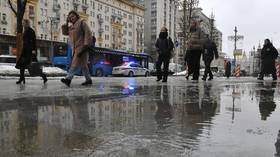‘Day of doom’: Haunting images show power of 20th century’s deadliest volcanic eruption (PHOTOS)
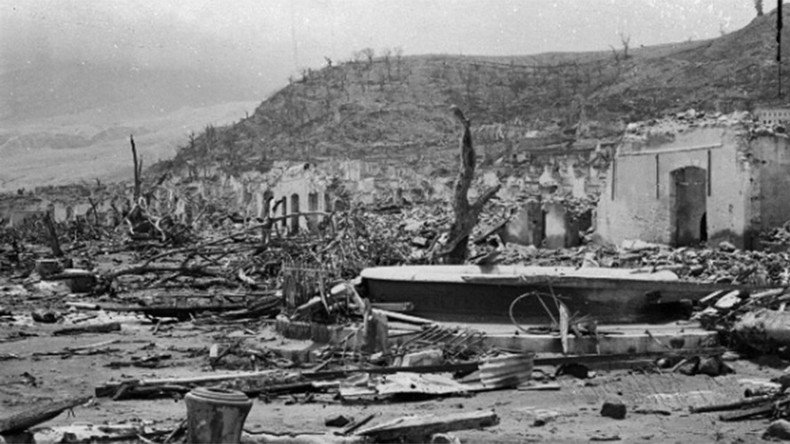
A century ago, the tranquil island of Martinique was violently interrupted by a massive volcanic eruption choking the foothills of Mount Pelee, wiping out a town and killing thousands.
Life for the townspeople of Saint Pierre changed in an instant on the French-owned Lesser Antilles island after its neighboring volcano rained hellfire on May 8, 1902.
According to earth scientists at the Institut de Physique du Globe in Paris, an intense build-up of volcanic gases within the Caribbean mountain caused the “violent explosion” at around 8 a.m., just as people were waking up or starting work.
1902 photographs of the city of St. Pierre before and after the eruption of Mount Pelée, seen in background pic.twitter.com/J7l5roIVXs
— David Bressan (@David_Bressan) 4 May 2016
The institute cites studies by French geologist Alfred Lacroix, who visited the area in the years after an upsurge in volcanic activity on the island.
The 1902 eruption sent a black river of molten rock and gas tumbling down the 1,397-meter volcano’s steep hillside, sweeping through the town of Saint Pierre in “less than a minute”.
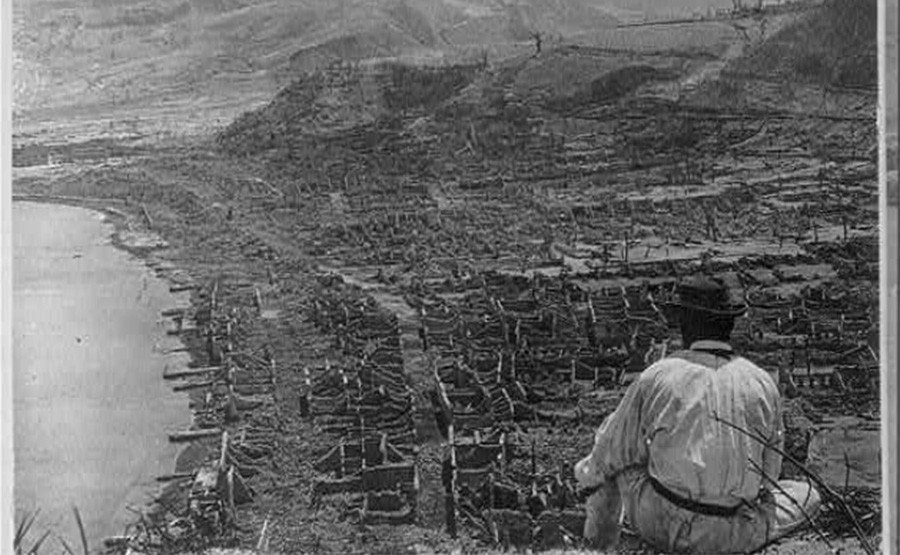
It is estimated the pyroclastic flow reached a height of almost 200 meters, with many of the fatalities coming as a result of asphyxiation from dense volcanic ash clouds.
While the death toll is believed to range from 28,000 to above 30,000, it is accepted that the Mount Pelee disaster was the deadliest eruption of the 20th century.
Charred and twisted
Harrowing contemporary photos held by the US Library of Congress detail the death and destruction which visited the coastal town 114 years ago.
In the grainy black-and-white images, the ashen remains of Saint Pierre can be seen among the scorched northern Martinique countryside.

They depict a desolate, scarred landscape pockmarked with twisted tree trunks and overrun with rubble from collapsed buildings.
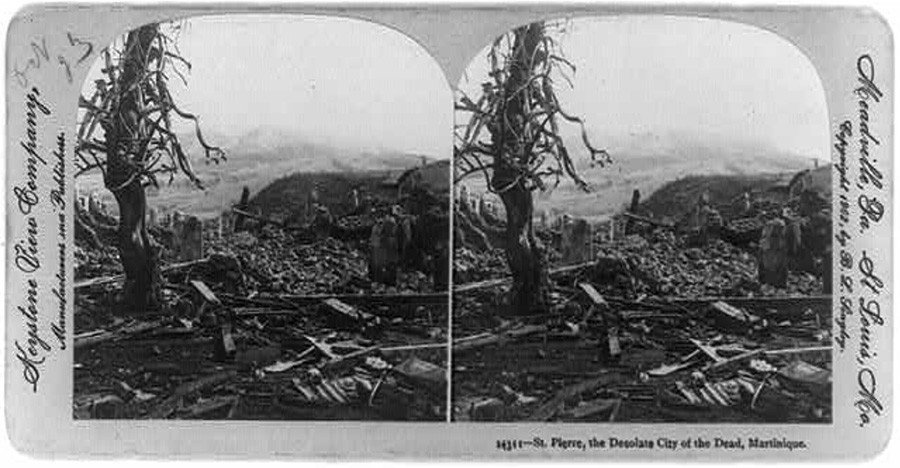
One photograph, dated August 30, 1902, appears to capture the beginning of another eruption on the island – its caption labeling the mountain a “destroying demon let loose”.
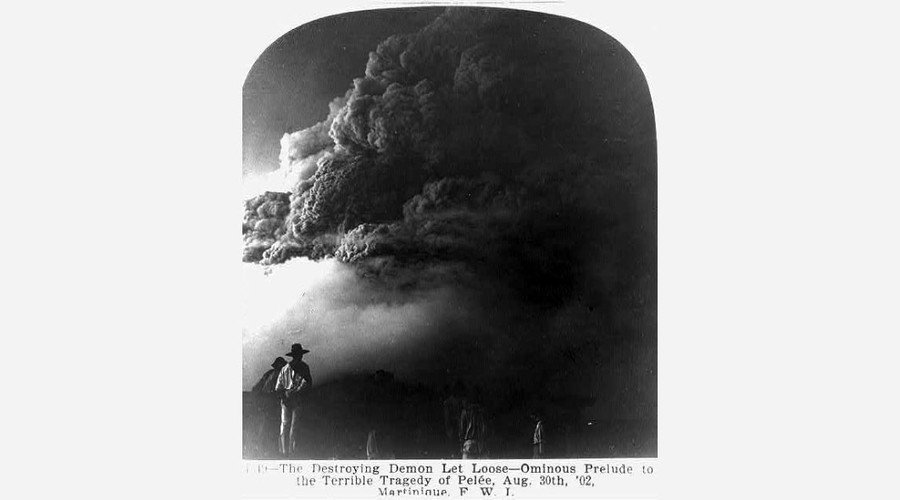
Eyewitness recounts escape
Thousands of miles away and two days after the incident, The San Francisco Call ran a story describing how “torrents of hot ashes” from the cauldron of Mount Pelee buried the town.
Quoting correspondents in the West Indies and the commander of French warship Suchet, which responded to the chaos, the newspaper said the eruption had been a “shower of death”.
“St Pierre… the gem of the Windward Islands, has been blotted out under the storm of fire and the avalanches of molten rock and ashes.”
“For anything approximating a parallel in horror… one must hark back… to the doom of Herculaneum and Pompeii,” the report stated.
Mt Pelee news report by the San Francisco Call. 115th anniversary of the eruption tomorrow. - Library of Congress pic.twitter.com/pDA2z8GAbG
— Luke Holohan (@Lukeholohan) May 7, 2016
It later chronicled a landowner’s escape from the island, and reported that livestock went beserk prior to the blast and snakes fled their natural habitat on the lush, green mountainside.
READ MORE: 100 years ago today, Ota Benga ended his horrible life after caged as ‘pygmy’ at Bronx Zoo
“It was a little before 8 o’clock on the morning of May 8 that the end came. I was in one of the fields of my estate when the ground trembled under my feet, not as it does when the earth quakes, but as though a terrible struggle was going on within the mountain,” the eyewitness recalled.
He tells how he gathered what little belongings he could before boarding a steamship to the now capital Fort de France, approximately 36 kilometers away from the carnage.
“I knew that there was no flame in the first wave that was sent down upon St Pierre. It was a heavy gas-like firedamp and it must have asphyxiated the inhabitants before they were touched by the fire which quickly followed.”
May 8 was declared St Pierre’s “Day of Doom” by Iowa’s Leon Reporter that same year, with an unnamed New York Herald journalist telling the paper how the area was nothing but a “city of the dead”.
Eruptions continued to rock the island for a number of years after the 1902 volcanic explosions, many of which were documented by geologists like Lacroix.
Heard of the #pompei of the #caribbean? Mt Pelee in todays #cruise#travel#blog#interestinghttp://t.co/vTlcaKsaodpic.twitter.com/jcrxId1n2q
— MSC Cruises (AU/NZ) (@MSCCruisesAUS) February 21, 2013
While Mount Pelee remains an active volcano its last known eruption was recorded in 1932, the Smithsonian’s Global Volcanism Program reports.
Ruins of the old municipality still stand as tourist attractions - and a stark reminder of the catastrophic power of mother nature.








